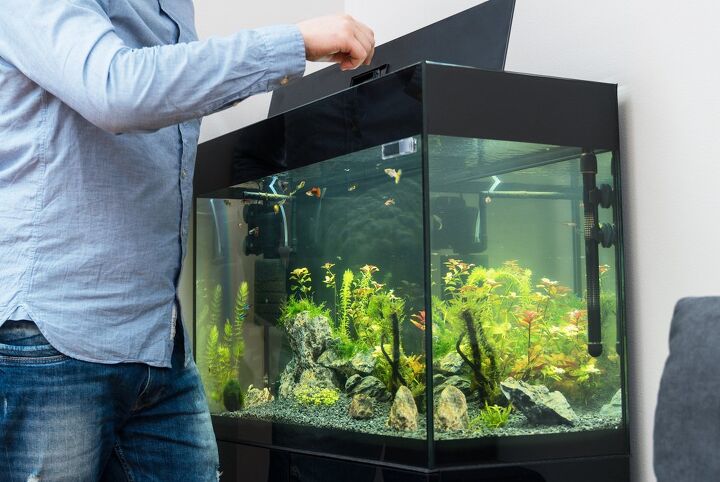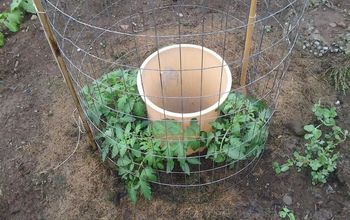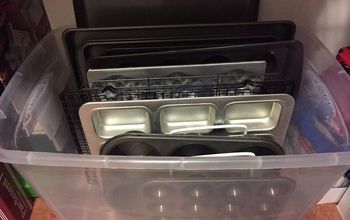How to Clean a Fish Tank and Keep Nemo Happy

By Erin Lindholm
Having a fish tank in the home is fun for family members of all ages. When properly maintained, fish tanks are both a joy to observe and an attractive decor piece. A home aquarium is a complete underwater world that brings a bit of nature indoors and inspires creative thinking and curiosity about science and nature.
For first-time aquarium owners, the good news is that they require minimal upkeep—especially compared to furrier pets in the home. Light, regular maintenance with the right aquarium products is the best way to clean a fish tank.
This guide covers all the do’s and don’ts of maintaining a home aquarium. We’ll cover everything from a step-by-step guide for how to clean a fish tank, a shopping list of essential cleaning products, and tips for keeping your aquarium clean. Let the underwater fun and games begin!
Photo via Shutterstock
When to Clean a Fish Tank
As with any cleaning task, the longer you wait to clean, the more consorted an effort it’s going to be. So long as the water in the aquarium is clear and within a healthy range for the fish (we’ll get into that in a minute), at minimum, you should clean a fish tank once a month.
Twice-a-month cleanings are more common, and a weekly “light vacuum,” which includes topping off the tank with some fresh water, is the gold standard. But the bottom line is that it really depends on the size of the tank, the size of your fish population, and how well the tank’s biological filtration mechanisms (beneficial bacteria, live plants) maintain a healthy environment for the fish.
One weekly routine that should never be skipped is testing the water for elevated pH levels, ammonia, and nitrites, all of which are harmful to the health of your fish. Luckily, aquarium water test kits are sold in bulk, are cheap, and provide virtually instant readings. (See below for product recommendations.)
What You Need to Clean a Fish Tank
The best way to clean a fish tank is to have the right products made for the job. While we love DIY cleaning hacks for the home, when it comes to looking after your aquatic friends, they really require supplies formulated to their needs. Fish are sensitive; the chemical residue of household cleaners and lint from products like sponges and paper towels can upset the delicate balance of their underwater environment.
With that being said, fish tank cleaning products are relatively inexpensive and easy to use. Here are the essentials you should purchase to maintain and clean your fish tank:
- An algae scraper is used to clean the inside surfaces of the aquarium. These non-scratch brush pads are sold in a range of styles, including: a double-sided sponge with a long-reach handle; a handheld, floatable scrubber; and the Mag-Float, a magnetic cleaning tool that comes in versions for glass or acrylic fish tanks.
- There’s a lot hiding in a fish tank’s gravel, such as food bits and fish droppings. An aquarium siphon vacuums up these loose particles from the gravel. Essentially a flexible plastic tube and filter with a light suction, the siphon draws water up into the hose as the user manually moves the tube around the tank, stirring up the gravel.
- Aquarium water test kits ensure that the water is safe for all aquarium inhabitants. While invisible to the eye, certain biochemical markers can wreak havoc on your aquatic community. Test kits range from aquarium test strips—simply dip a test strip in the water and wait for results to emerge—to a test tube test kit, which reveals results after a few drops of a testing solution are added to a vial of aquarium water.
- Aquarium conditioners neutralize chemicals found in tap water and correct other imbalances in the tank. A few drops of products such as API’s Stress Coat or Fritz Aquatics Complete Water Conditioner dechlorinate and remove traces of heavy metals, ammonia, or nitrates in water before pouring into a tank. Use every time fresh water is added to the tank. (See step-by-step instructions below.)
- Aquarium-safe cleaning spray is used to clean the exterior of the fish tank and all out-of-water components (e.g. hood, light, filtration system). Non-toxic and fish-safe, aquarium cleaning sprays can be used on all surface areas of glass and acrylic tanks. Given how sensitive fish are to chemicals, you don’t want to take any chances.
How to Clean a Fish Tank
The first thing to know about how to clean a fish tank is that the fish always stay in the tank! During a cleaning, you really only suction out (and subsequently replace) about 25 percent of the volume of water in the aquarium, so there’s plenty of water for the fish to keep swimming about. Plus, transferring the fish from the tank to a holding vessel and then back to the tank causes more harm than good. It’s stressful and disruptive for the fish and makes them more susceptible to ailments such as ich (a parasitic disease common in fish). The bottom line: Leave them in the tank. They’ll just keep swimming and will be extra pleased to have a nice, clean home (as we all are).
Tools and Materials Needed
- Algae scraper
- Aquarium siphon
- Algae pad
- 2 buckets (one for waste water and one for fresh water)
- Aquarium conditioner
- Aquarium-safe cleaning spray
- Cleaning cloth
Step 1: Clean the Inside Glass
Unplug the aquarium pump, filter, and lights and remove the lid, as well as any removable components, so that you have full access to the inside of the tank. Since you’ll have your hands in the water, make sure to wash and rinse them thoroughly to remove any traces of soapy residue.
Use your algae scraper to clean all interior walls to loosen algae. Once the algae is dislodged, it may look like it’s still floating about the water. Don’t worry too much, as the tank’s filter will take care of removal in the next 24 hours or so.
Replace Filter Later
Step 2: Remove and Clean Decorative Objects and Plants
Depending on how robustly you’ve decorated the fish tank and how often you clean, you may or may not have to remove objects from the tank every time you clean it. At least once a month, it’s a good idea to give the tank a deep clean, including removing and cleaning the decor. But if you’re vacuuming the aquarium weekly, it’s fine to leave everything in the tank three out of four times.
When you do take the decor out, clean all pieces in the sink under running water and scrub down with an algae pad. Do not use soap! For stubborn algae that won’t give way to scrubbing, boil a pot of water on the stove. Once the water reaches a boil, turn the stove off and soak the decorative pieces in the hot water for about 20 minutes before scrubbing again with the algae pad.
Step 3: Vacuum Gravel
Time to bring out the aquarium siphon! Follow the product’s instructions, but generally, you’ll submerge the siphon tube in the tank, with the other end of the hose in a bucket on the floor. Move the tube around the tank, intentionally disrupting the gravel to stir up debris. Stop when no debris is coming out of the gravel and/or the tank’s water level has been depleted by about 25 percent.
Reuse the Water
Step 4: Redecorate the Tank and Replenish Water
Return all decorative objects to the tank. In the bucket, treat tap water with an aquarium conditioner, using the recommended doses on the conditioner bottle. Once the water in the bucket comes to room temperature, cross-check the temperatures of the water in the bucket and in the fish tank to confirm that they’re approximately the same so as not to shock the fish. Fill the fish tank up with the fresh, conditioned water. Replace any aquarium parts that had been removed for cleaning and plug in the tank so that the filter kicks on.
Thermometer Tip
Step 5: Clean the Exterior
Spray down the exterior glass or acrylic surfaces of the fish tank with the aquarium-safe cleaning spray. You should also periodically wipe down the aquarium hood and interior components where you see algae growth, mineral deposits, or dust.
Tips for Keeping a Fish Tank Clean
Keep your fish tank fresher for longer—it’s in your fish’s best interest, after all! Here are some more tips for maintaining a fish tank.
- Cloudy water in the aquarium? Your nitrate levels are likely high. Test the aquarium water and refresh 30 percent of the tank’s water by following the instructions above.
- Avoid displaying your fish tank in a location with direct sunlight, which will encourage and expedite the growth of algae. Additionally, too much exposure to direct sunlight can warm the water beyond what’s recommended for your fish population.
- Enlist nature’s help to keep algae buildup under control: an algae eater, or a fish that consumes this organism. Bonus points for cuteness as it’s fun to watch them at work, their suction-cupped mouth literally “kissing” the glass. Just be sure that, if you’re pairing them with other fish species, you do the research to confirm that they can cohabitate.
- To keep your aquarium clean and running efficiently, it’s a good idea to examine all of the functional components of your fish tank once or twice a year, to make sure all filters, pumps, lights, and heaters are in good condition.
Do you have fish at home? If so, how do you clean their tanks? Let us know in the comments below!

























Frequently asked questions
Have a question about this project?